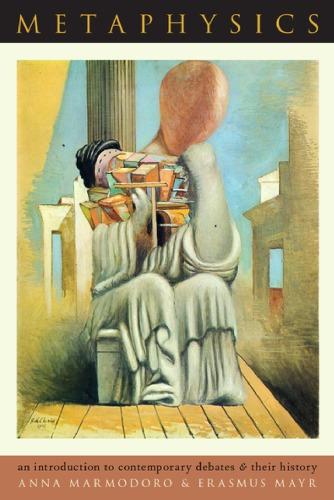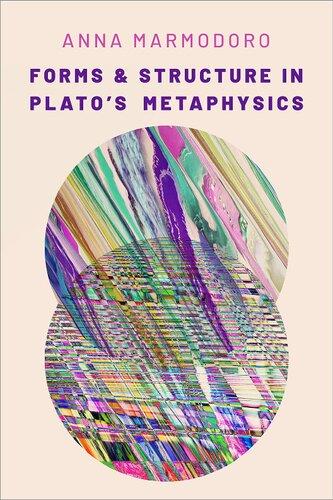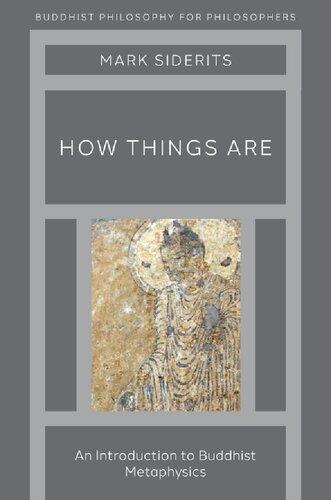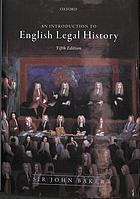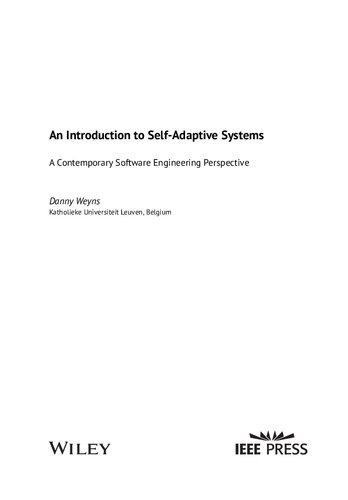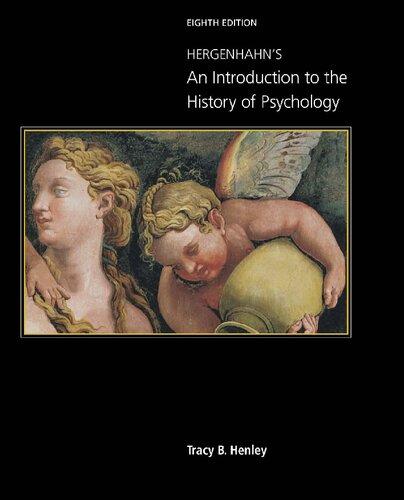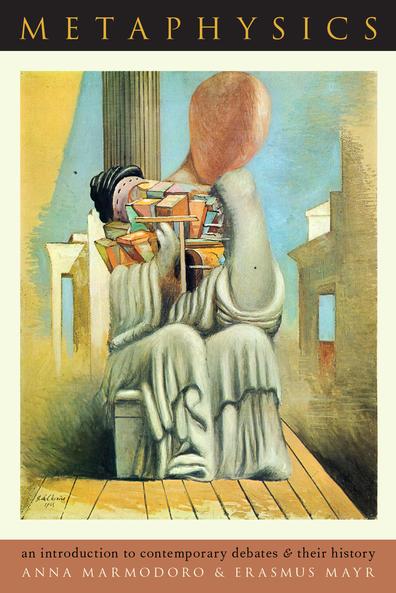✦ METAPHYSICS
An Introduction to Contemporary Debates and Their History
ANNA MARMODORO AND ERASMUS MAYR
Oxford University Press is a department of the University of Oxford. It furthers the University’s objective of excellence in research, scholarship, and education by publishing worldwide. Oxford is a registered trade mark of Oxford University Press in the UK and certain other countries.
Published in the United States of America by Oxford University Press 198 Madison Avenue, New York, NY 10016, United States of America.
© Oxford University Press 2019
All rights reserved. No part of this publication may be reproduced, stored in a retrieval system, or transmitted, in any form or by any means, without the prior permission in writing of Oxford University Press, or as expressly permitted by law, by license, or under terms agreed with the appropriate reproduction rights organization. Inquiries concerning reproduction outside the scope of the above should be sent to the Rights Department, Oxford University Press, at the address above.
You must not circulate this work in any other form and you must impose this same condition on any acquirer.
CIP data is on file at the Library of Congress
ISBN 978–0–19–094162–8 (pbk.)
ISBN 978–0–19–094161–1 (hbk.)
9 8 7 6 5 4 3 2 1
Paperback printed by WebCom, Inc., Canada
Hardback printed by Bridgeport National Bindery, Inc., United States of America
To our young friends Lisa, Lisa, and Anna.
2.4.
2.5.
3.
3.1.
3.2.
3.3.
3.4.
4.4.
5.1.
5.3. The consequence argument and the fortunes of incompatibilism
5.4. Moral responsibility and free will
5.5. Free will and the “new dispositionalism”
5.6. Conclusions
ACKNOWLEDGMENTS
This book project began as a philosophical conversation between two colleagues and friends, whose agreements and disagreements with respect to metaphysical matters sparked off many lively discussions to “work things out”— to understand each other’s point of view better, to seek common ground, to reach conclusions, or take stock if ultimate conclusions could not be reached. It is in the spirit of a conversation that involves the reader too, that this book was written. Our goal is ultimately to introduce the reader to core philosophical questions, and to examine with her or him the arguments with which the questions have been addressed, in current as well as past debates that have shaped the history of metaphysics.
We are grateful to all our colleagues and students who at different stage of the project have enriched our conversation with their contributions, questions, and objections—George Darby, Andrea Roselli and Konstantin Weber in particular.
xii | A CKNOWLEDGMENTS
We want to extend our warmest thanks also to OUP’s book readers: John Heil and a second reader who remained anonymous; and to the Editor, Peter Ohlin. This book has grown from our earlier work, Marmodoro and Mayr (2017), on which Gianluca Mori from Carocci Editore kindly allowed us to draw. Last but not least, we are grateful to Gianluca Mori and our wonderful Italian publisher Carroci, who allowed / encouraged us to use, as a basis of this book, the text of our Italian book ‘Breve introduzione alla metafisica’ (Rome: Carocci 2017). It is from modifications and additions to this text that the present book has developed – we hope the two years’ more thinking have not been in vain.
INTRODUCTION
What is metaphysics about?
THE DESIRE TO UNDERSTAND HOW things are, why they are as they are, and why they change is deeply rooted in human nature. This desire has expressed itself in two main forms of systematic inquiry in the history of human thought: on the one hand, in the empirical way of science, and, on the other hand, in the speculative way of philosophy. While philosophy has been concerned with many different questions—such as how we should live or whether we can know anything—one particular line of philosophical inquiry, since antiquity, has been about investigating the fundamental make-up of reality. This branch of philosophical inquiry is called metaphysics. The word itself (even if Aristotle did not use it) derives from the title of one of Aristotle’s works. It was an editor (in all probability, Andronicus of Rhodes), at least one hundred years after Aristotle’s death, who titled one of his works “Ta meta ta physika,” meaning literally “the [books] after the physical ones,” where the “physical ones” are the collection of books that we now call Aristotle’s Physics. While the domain of interest of metaphysics has steadily evolved since Aristotle’s time, there is also a continuity between
ancient and contemporary metaphysics in subject matter and methodology.
Like other sciences, contemporary metaphysics has goals and characteristic methods: in very broad terms, its aim is to advance our understanding of reality by analyzing problems and developing explanations, which are then “tested”, for example, against possible counterexamples that the proposed account might not be able to explain. In other respects, however, metaphysics is essentially different from other sciences. Metaphysics aims at what is most general and fundamental, in terms of its questions as well as its answers: its domain is what there is, or we could say, all there is. As Aristotle put it, metaphysics tries to discover the first principles and causes of everything, and is concerned with “being as such”. These two features, fundamentality and generality, distinguish the science of metaphysics from other sciences. Take biology, for instance, the science concerned with living beings. The principles which biology wants to discover are neither fundamental nor general ones. Consider: a biologist sets out to discover and finds a biological law LB that explains how the offspring of a certain species inherits certain traits from their parents. The biologist’s expectation will be that either LB is explicable in terms of an even more fundamental law of chemistry LC (which allows us to understand exactly how the traits’ transmission mechanism works), or, at the very least, the transmission procedure must accord with more fundamental laws of chemistry LC and ultimately the fundamental laws of physics. In either case, LB is not truly a “first principle,” but less fundamental relative to the relevant laws of chemistry and physics. Furthermore, not all things fall within the purview of biology (e.g., inorganic matter does not), so biology
is certainly not concerned with “being as such”, that is, the being of all beings.
It is important to note that what is distinctive of metaphysics isn’t just that metaphysics spans everything. There is, or could be, some other science whose domain is everything that de facto exists and whose principles and laws cannot be explained in terms of anything more fundamental than them. Some think that physics is such a science, assuming that nothing but physical objects exists, and that the ultimate physical laws cannot be explained in terms of any more fundamental ones. But even if physics turned out to have everything that exists as its subject matter (and there are very good reasons to doubt that), metaphysics would still remain as a distinct (and we submit, necessary) kind of inquiry into the nature of reality whose investigation cannot be exhaustively carried out by physics alone. First, physics is not concerned with everything qua existent, and therefore is not concerned with “being as such,” but rather, with things qua physical objects. Since even someone who denied that any nonphysical things existed would have to admit that other nonphysical things might exist, or there might be some features of reality which are not physical, she would have to admit that studying physical reality is not the same as studying “being as such”. Furthermore, that everything which exists is physical, (if it turned out be the the case) is something that could at best be discovered as a result of philosophical and scientific inquiry, and definitely could not be the starting point of an inquiry into what exists. For there is no obvious and immediately compelling reason to assume that only physical things can exist. In order to be able to answer (in the positive) the question of whether all things that exist are physical, we would have to turn to more basic questions first, such as
what it means to exist, or what kind of things could in principle exist (only particular things, or also general properties? and can the second exist without the first?, etc.). For without an answer to these questions, physics or any other empirical science could tell us nothing about what we should believe exists.1 Answering these more “basic” questions, and thereby providing the framework within which questions about the scope of physics, and in particular, the question of whether everything that exists is physical, can sensibly be addressed, is the task of—metaphysics.2 What is distinctive about metaphysical inquiry is therefore not just the de facto generality of its subject matter: it is that this generality follows from its attempt to answer fundamental questions about reality, on the basis of which more specific ones can be dealt with in the other sciences.
But one might ask: does such a general and fundamental line of inquiry even make sense? Why should we assume that there is a general and fundamental structure of reality that we can discover or at least search for? The answer is that we cannot really avoid making the assumption that there is some such structure of reality. For ultimately, whenever we think about reality, we must assume that there is just one reality, just as there is only one truth. As Jonathan Lowe put it: “Truth is single and indivisible, or, to put it another way,
1. As Lowe (2002, 10) succinctly puts it: “Empirical evidence cannot be evidence for the existence of anything which is not a possible feature of reality.”
2. Some philosophers have argued that the scope of metaphysics is so encompassing that even the status of metaphysics itself is a metaphysical question, and, as a consequence, it doesn’t even make sense to deny the possibility of metaphysics (see Moore 2012, 3; Lowe 2002, 3).
the world or reality as a whole is unitary and necessarily self-consistent.”3 We may not find out very much about how reality is—but at the very least, we must assume that everything we can really find out “fits together”. This holds as well for what any science—be it physics, biology, or any other— can tell us: if their findings and theories are correct, then they are all describing aspects of one and the same reality, and therefore cannot contradict one another.
So, at the very least, this much, namely the existence and consistency of one basic and general structure of reality, is something any inquiry about the world must be based on. But as we are going to see in the following chapters, there is good reason to be even more optimistic and to think that by means of philosophical inquiry we can discover more than such an extremely “thin” structure of reality. For very often, when reflecting on certain things whose truth we are very confident about, we find out that in order to make sense of these things, we have to assume (or it is best to assume) that there is some underlying structure or some underlying categories which explain this truth. For instance, you will be very confident that there is a book in front of you, and it will be extremely hard to convince you otherwise. When you make a coffee stain on one of its pages, you will be equally confident that it is still the same book, even though something about it has changed. Thinking about these matters—that something remains the same in some way even through a perceived change—makes it very natural to distinguish two fundamental categories, namely of substance, and of its properties, where the former can remain the same, even though some 3. Lowe (2002, 3).
of the properties it has might change. (We will discuss this issue at more length in chapter 1.) In what follows, we will introduce other instances of this strategy—and alternative ones—to show that they provide us with good reasons for substantial metaphysical claims.
Thus, some general structure will have to be presupposed for any specific scientific inquiry. Further, this general structure will not be the concern of any particular natural science. For as we have seen, even if it turned out that, as a matter of fact, everything that exists was the object of a particular science, say physics, this would not make the metaphysician’s job redundant: even if everything real were physical, physics on its own certainly couldn’t tell us so. (Nor, for that matter, could physics itself tell us how it relates to apparently conflicting findings of other sciences, say chemistry or biology, because physics is only able to adjudicate questions about things qua physical beings.4) Metaphysicians should not therefore worry that their subject matter will be “taken over” by the natural sciences, or that what is not covered by the natural sciences will be unworthy of investigation. This was a common enough worry in the heyday of scientism in the twentieth century—and, at the same time, a widespread hope among philosophers hostile to traditional metaphysics, who thought that the important questions about the structure of reality, such as they were, would be left to the sciences.5 This worry is as empty as the opposite hope (namely
4. For more on the need for metaphysics to “adjudicate” between the different disciplines and sciences see Lowe (2002, 2f).
5. Just as one example of this view see the following statement of W. V. O. Quine: “It is within science itself, and not in some prior philosophy, that reality is to be identified and described” (1981, 21).
that philosophy makes the sciences redundant); we reject the idea that metaphysics is just an outdated intellectual inquiry that has been made redundant by the progress of modern science, and we will try to give you in this introduction an insight into how lively and exciting this kind of inquiry still is.
This does not mean, however, that metaphysics could, or should, completely disregard the findings of modern science. If metaphysics is going to help us “make sense” of things in the world, by trying to discover (parts of) the underlying structure of reality, then it should take into account what our best contemporary science tells us about the world. And, indeed, we will see at different points in this book how considerations from modern science are relevant for how to think about the underlying structure of reality, for example by showing us that certain intuitively plausible assumptions about the world (e.g., the connection between powers and qualitative features, section 2.6) need not be ultimately compelling.
When we try to understand what makes metaphysics distinctive, the relation between metaphysics and the natural sciences is only one of the issues. Another one is the relation between metaphysics and our natural language. Just as many scientifically minded philosophers have thought that the “real” questions of traditional metaphysics could be turned over to the natural sciences, because the latter were the ones suited to describe and explain reality, you might think— going into the opposite direction, as it were—that what metaphysics could ever discover could just be the structure of the language we use to think and talk about reality. This view does not deny that there are questions that are, in a sense, more fundamental than those addressed in the sciences, but it does deny that metaphysics can really discover anything
about reality; it can discover only something about our way of thinking and speaking about reality (which is historically contingent).
Addressing this worry is no less important for an adherent of the “traditional” project of metaphysics than addressing the worry about the relation between metaphysics and the natural sciences. And it is important to stress that metaphysical questions are not just questions about language—if they were, we would most probably arrive at different metaphysical conclusions depending on the languages we contingently speak. So we will have to be very careful about taking peculiarities of linguistic practice (e.g., of grammar) to reflect some underlying feature of reality. But nonetheless, natural language can be an important guide in many cases, since it usually encapsulates ways of thinking about the structure of reality which come naturally to us and which have proved useful and viable over the time the language evolved. This does not mean that ordinary language is “sacrosanct,” or that it cannot turn out to be the case that grammatical distinctions do not correspond to distinctions of fact. But ordinary language is usually a good place to start. As John J. L. Austin nicely put it: “Ordinary language is not the last word: in principle it can everywhere be supplemented and improved upon and superseded. Only remember, it is the first word.”6
Based on this understanding of the enterprise of metaphysics, this book will give the reader a brief introduction to the subject, with reference to current debates and their historical background. We will focus on the following topics: substance, properties, modality, causality, and free 6. Austin (1979, 185).
will. For reasons of space, and complexity of the issues, we cannot offer a full overview of our five topics and the relevant debates in the literature. However, we hope to give the reader at least a sense of why these issues have fascinated so many generations of philosophers and continue to do so. In addition, we hope to give the reader an insight into the workings of the metaphysical inquiry; how debates evolve and what is at issue in them; and what kind of considerations can be used to argue for and against metaphysical claims. Our overall approach is broadly speaking a neo-Aristotelian one, and the viewpoint that we concentrate on when investigating various topics is a power ontology of a neo-Aristotelian kind that we will show can usefully be brought to bear on various debates. This is not, however, to the exclusion of different viewpoints whose merits we will also present.
SUBSTANCE
1.1 INTRODUCTION
Imagine that you are talking on the phone to a friend who has never been to your apartment. To get a better impression of what your home is like, she asks you to tell her what things there are in your living room. So you start enumerating all the things that are around you: your desk, the computer on it, your poodle Fido, your books, and so on. Listing these items seems the “right” answer to your friend’s question about what there is in your living room. Yet at the same time, you could have made up quite a different list, or added some very different things to it: the smell from the curry dish you had for dinner, Fido’s bark, the sunlight that comes in through the window, the brown color of your desk or the softness of Fido’s ears. But to most of us, the first list will seem an intuitively more “natural” way to parse conceptually what there is in your room. And there are reasons for that. First of all, there is a way of “being in” your apartment that all the items on your initial list seem to share. Your dinner plates are there in the same way in which your books and computer are, but both are there in a different way from that in which their respective color is. Or at least so it seems, intuitively. In addition, objects such as your desk and Fido seem more
“fundamental” than the desk’s brown color or the softness of Fido’s woolly ears, in the sense that latter ones being in your room depends in some way on the former ones being there too. Without the desk, the desk’s brown color would not be in your room, either. But not the other way around: the desk would still be there, even if you painted it blue.
On a traditional view in philosophy, the material objects on your first list are thought to be “substances” and a different type of thing from the properties which they bear (such as their color, size, or texture). The Latin word substantia, from which the English “substance” derives, literally means “that which stands under,” or supports something else: substances “support” other entities that ontologically somehow depend on them. Of course, there are many different ways in which one thing can depend on another. In a sense, a desk depends on its parts—its legs, top, and so on—and these parts in turn depend on smaller parts, down to the atoms that make up things. Such atoms are more basic than the desk—in the sense that they are the stuff of which the latter, and presumably all material objects, are made up. There is a sense of “substance” that corresponds to that of “basic stuff” that makes up things; this was the sense in which, for instance, Thales famously thought that the substance of all things was water. On an alternative understanding of ontological dependence (and correspondingly, independence), you may think that a substance is an entity that can exist “on its own” and needs no other entity to exist.1 Whether any material objects and even atoms qualify as substances in this sense is highly questionable; perhaps nothing in the physical world does. Only
1. Réné Descartes for instance proposed such a view of substance in Article 51 of the first part of his Principles of Philosophy.
God may be a true substance in this sense, that is, something on which everything else depends, but that does not, in turn, depend on anything else.2
None of these two senses of “substance” is the one in which your desk, your computer, and Fido are substances, though. These items are substances in the sense of being individual particular objects, which are bearers of properties that depend on them. The idea that properties cannot just “float around” freely in the world, but need some underlying entity which bears them, or in which they “inhere”,—just as a predicate in a sentence needs some grammatical subject it is predicated of—has been enormously influential in the history of philosophy. Consider for instance the following passage from John Locke, which, despite Locke’s own misgivings about the traditional notion of substance, openly pays homage to it:
The Idea . . . to which we give the general name Substance, being nothing, but the supposed, but unknown support of those Qualities we find existing, which we imagine cannot subsist, sine re substante, without something to support them.
(Essay Concerning Human Understanding II, ch. 23, § 2)
What does it mean that “those Qualities we find existing” need some underlying entity “to support them”? The precise meaning of this claim depends on our understanding of what properties are; without, as yet, going into any details here, it is important to distinguish between two different theoretical options. When we normally talk of qualities and properties
2. Philosophers like Baruch Spinoza claimed that God was the only substance.
we do so as if they can be shared by different objects; we speak, for example of the brown color of your desk’s top as if it is the very same color as the one your chair has. In addition to—or even as an alternative to—such “common” properties which can be shared by different objects, many philosophers think there are (also) “particular” properties of particular objects (so-called tropes), which can only be possessed by one object and cannot be shared between objects. On this view the brown color of your desk is a property that only your desk can have; another object might have a qualitatively similar property, but not the (numerically) very same one. Not everyone thinks that the idea of tropes makes sense; we will come back to this issue later in this chapter. But just assume, for the moment, that there are not only “common” but also “particular” properties. Locke’s statement of the idea that properties “need” substances, in the passage quoted here, will then need to be formulated in a different way for each kind of property in question, the common and the particular ones. Particular properties, assuming that they exist at all, cannot exist without a particular object that supports them—for they are precisely properties of particular objects. The brown color of your desk, understood as a particular property, would not exist if your desk did not exist in the first place. For common properties, the issue is less clear: it is famously disputed whether such properties can exist independently of any bearer. Platonists who believe in the existence of so-called transcendent universals will assume they can exist ante res, that is, even in the absence of anything which instantiates them. The universal Red would exist, on this view, even if there were no red objects in the world. Aristotelians disagree: they hold that universals can only exist in rebus. To use a neutral formulation which
covers both common and particular properties, we will say that without substances there would be no properties in the world (because either there would not exist any properties, or, at least, they wouldn’t be instantiated in the world). This was indeed, roughly put, Aristotle’s view with regard to what he called “primary substances” (which correspond, more or less, to our third sense of substance, i.e., substances as individual objects). As Aristotle argued at the beginning of the Categories, everything that was not a primary substance itself existed only “in” a substance. (For more on Aristotle’s view, see section 1.4.)
Substances are therefore widely held to be needed to “anchor” properties—either by providing the basis for their existence, or by being necessary for their instantiation in the world. The same kind of reasoning applies, mutatis mutandis, to relations, which are not possessed by individual objects taken singly, but which “connect” different things. “Being higher than” is not a property that your chair, for example, could have on its own when it is higher than your table. It is, instead, a relation that can only be coinstantiated by two objects, such as your chair and your table, when the first is higher than the second. Relations would need the same kind of “anchor” in the world as properties, which, again, would have to be provided by substances, such as your table and your chair. This parallel way in which substances are traditionally thought to “underlie” both properties and relations is hardly surprising. For in both cases the distinction between different entities and their relations has been modeled on the linguistic difference between subject and predicate of a sentence and the apparent dependence of both predicates and relational terms on a grammatical subject. Not all grammatical subjects have been considered to stand for genuine
substances, and, as we will see in the next section, not every predicate can be taken to stand for a genuine property. But in general, the substance/property relation has widely been taken to be the ontological analog to the grammatical subject/predicate relation in a sentence.
There is also a third category of entities which substances are thought to underlie, in quite a different way. According to another influential line of thought, substances, qua bearers of properties and relations, are what underlies qualitative changes. In order to be capable of underlying changes, substances must meet at least two conditions. First, they must be capable of persisting through time. While a sudden flash of lightening is only “present” at one particular moment—it occurs at this moment, and is over immediately afterward— substances are at least generally speaking capable of persisting for some period of time. If they didn’t, they couldn’t underlie any changes which are noninstantaneous. For instance, your desk could not change its color from brown to blue unless it could exist for the whole stretch of time while you do the repainting. Second, substances must be capable of having contrary properties and entering into contrary relations (at least for some pairs of contraries). In order to change its color, your desk must be capable both of being brown and of not being brown, but having some other color. Not all changes can straightforwardly be understood in terms of changes in the properties or relations of “underlying” substances, though. Some changes seem to involve the coming into or going out of existence of substances themselves: for example when you build a house, a new substance (i.e., the house) comes into existence, and when the house burns down, it goes out of existence—or so it appears. Should we, in order to understand these changes in terms of the changes of properties of
underlying substances, posit yet further substances which underlie these changes (e.g., the bricks of which the house is made, and which continue to exist throughout the completion of the house, through changes in their arrangement and combination)? This is a question we will set aside here, concentrating only on those changes whereby substances are neither destroyed nor created.
The idea that substance is what underlies “mundane” changes such as that of color can already be found in Aristotle, but in order to see the enormous influence of this idea, it is useful to quote someone who was highly skeptical about the notion of substance, namely David Hume, who wrote:
When we compare [an object’s] situation after a considerable change . . . and consequently . . . are presented with the idea of diversity: In order to reconcile which contradictions, the imagination is apt to feign something unknown and invisible, which it supposes to continue the same under all these variations; and this unintelligible something it calls a substance. (Treatise of Human Nature, 220)
Substances have yet a further characteristic, though, which Aristotle stressed too, and which is brought out more clearly by the Greek term that is usually translated as “substance”: ousia. Individual substances are not just any arbitrary compounds or collections of things. For example, the small heap of dust on your doorstep, or the pile of philosophy books that fell from your bookshelf yesterday, are not substances. Instead, individual substances have a principle of unity that holds them together, and allows us to distinguish them from their surroundings and to say what “belongs to” a particular substance and what doesn’t. Mere heaps of objects
lack such a unity: you call the pile of philosophy books on your floor “one pile” only because the books lie on top of or next to each other, that is, on account of their physical contiguity and spatial relations. But you could also take half of those books on the floor to form a pile on their own, and talk of the books now as two adjacent piles of books. Whether you talk of them as one or two piles is ultimately arbitrary. If you look at a living cell, by contrast, it is not similarly “up to you” whether you call that organic material one cell or two adjacent ones. For each cell is unified by a functional principle: it needs certain parts in order to live, and only consists of the parts which are necessary for its survival and propagation, such that you cannot draw the boundaries of the cell in such a way that necessary parts are excluded.
The unifying principle which makes a substance one, unifies the substance at a particular time, but also diachronically; that is, it determines whether a substance still continues to exist as numerically the same substance over time. For instance, the living cell can continue to exist as the same cell even if significant amounts of matter constituting the cell are substituted by other matter, as it happens all the time in metabolism. (Remember, diachronic persistence of substances is important for them to be capable of underlying changes.)
Where do these unifying principles come from?
According to the traditional Aristotelian view, they derive from the substance’s nature or essence, which determines what kind of being it is. The essence of a substance (to which we will return later at more length) comprises (in first approximation) those properties without which the individual substance could no longer be what it is nor continue to exist.3
3. As we will see in chapter 3, not all properties necessarily possessed by an
